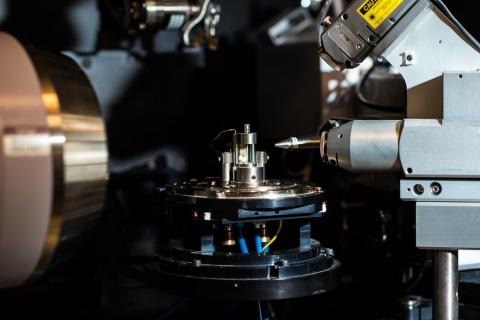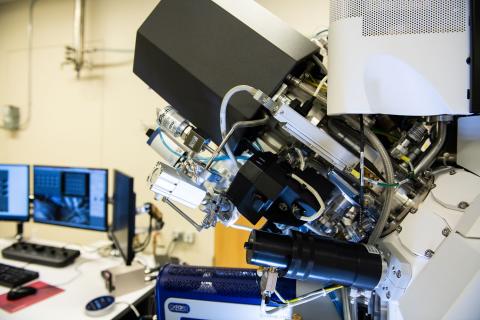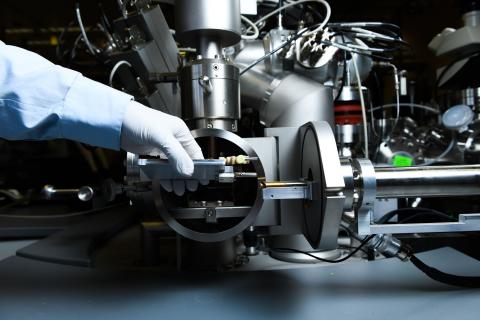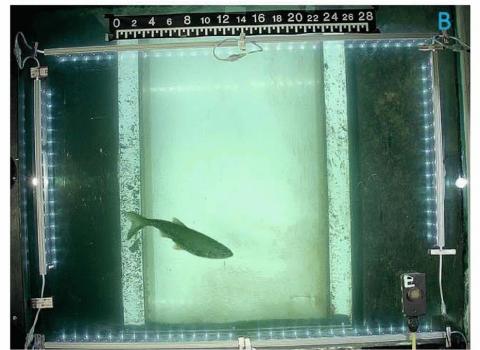The Nikon Eclipse Ti2-E is a motorized and intelligent model for advanced imaging applications. Compatible with PFS, auto correction collar, and external phase contrast system. The base of choice for live-cell imaging, high-content applications, confocal and super-resolution.As research trends...
Filter results
Category
- Scientific Discovery (222)
- Biology (139)
- Earth System Science (111)
- Human Health (87)
- Integrative Omics (67)
- Microbiome Science (25)
- National Security (19)
- Computing & Analytics (14)
- Computational Research (12)
- Energy Resiliency (9)
- Data Analytics & Machine Learning (7)
- Visual Analytics (6)
- Coastal Science (4)
- Renewable Energy (4)
- Atmospheric Science (3)
- Chemical & Biological Signatures Science (3)
- Chemistry (3)
- Computational Mathematics & Statistics (3)
- Data Analytics & Machine Learning (3)
- Ecosystem Science (3)
- Weapons of Mass Effect (3)
- Cybersecurity (2)
- Distribution (2)
- Electric Grid Modernization (2)
- Energy Efficiency (2)
- Energy Storage (2)
- Grid Cybersecurity (2)
- Materials Science (2)
- Solar Energy (2)
- Bioenergy Technologies (1)
- Computational Mathematics & Statistics (1)
- Grid Analytics (1)
- High-Performance Computing (1)
- Plant Science (1)
- Subsurface Science (1)
- Terrestrial Aquatics (1)
- Transportation (1)
- Wind Energy (1)
Dataset Type
- Omics (86)
- Transcriptomics (51)
- Proteomics (39)
- Sequencing (39)
- Metabolomics (28)
- Lipidomics (26)
- Simulation Results (17)
- Amplicon (16S, ITS) (15)
- Metagenomics (9)
- Microarray (9)
- Computed Analysis (4)
- Genomics (4)
- ChIP-seq (2)
- Geospacial (2)
- Staff (2)
- Cybersecurity (1)
- Electromagnetic Spectrum (1)
- Mass Spectra (1)
- Microscopy (1)
- Phenomics (1)
- Whole genome sequencing (WGS) (1)
Tags
- Virology (69)
- Immune Response (53)
- Time Sampled Measurement Datasets (50)
- Gene expression profile data (47)
- Differential Expression Analysis (46)
- Homo sapiens (34)
- Mass spectrometry data (31)
- Multi-Omics (28)
- Omics (20)
- MERS-CoV (18)
- Mus musculus (18)
- Synthetic (14)
- Viruses (14)
- Health (13)
- Soil Microbiology (13)
- Virus (13)
- West Nile virus (13)
- Ebola (11)
- Influenza A (11)
- Genomics (10)
- Resource Metadata (9)
- sequencing (9)
- High Throughput Sequencing (7)
- Metagenomics (7)
- Human Interferon (6)
- Machine Learning (6)
- Microarray (6)
- Omics-LHV Project (6)
- Proteomics (6)
- Type 1 Diabetes (6)
Rigaku Rapid II Microbeam is one of the most versatile micro-diffraction XRD system in materials analysis, using advanced imaging plate technology for measuring diffraction patterns and diffuse scattering from a wide range of materials. The RAPID™ II Curved Detector X-Ray Diffraction (XRD) System's...
Category
The Physical Electronics Instruments (PHI) Quantum 2000 X-Ray Photoelectron Spectrometer (XPS) is a unique Micro-Focused Scanning X-Ray system that uses a focused monochromatic aluminum K X-ray beam that can be varied in size from as small as 10 μm in diameter to approximately 200 μm. The beam can...
The innovative Elstar™ electron column forms the basis of the Helios NanoLab’s outstanding high resolution imaging performance. The Elstar features unique technologies, such as constant power lenses for higher thermal stability, electrostatic scanning for faster, higher accurate imaging, and unique...
Category
The IONTOF TOF.SIMS 5 data source is a time-of-flight secondary ion mass spectrometer and powerful surface analysis tool used to investigate scientific questions in biological, environmental, and energy research. Among the most sensitive of surface analysis tools, it uses a high-vacuum technique...
This dataset contains EAM model output that was used to produce figures in the following paper: Zhang, S., Wan, H., Rasch, P. J., Singh, B., Larson, V. E., & Woodward, C. ( 2019). An objective and efficient method for assessing the impact of reduced‐precision calculations on solution correctness...
This data was generated by the organization IvySys. Activities can be phone calls, transactions, or any other type of communications. Most of the files are of the type .edges, .rdf, or .csv; but all can be opened in a text editor. A good introduction to this data can be found in \Tutorial1\MAA...
Category
The data accompanies the manuscript in review that evaluates salinity-associated shifts in organic C thermodynamics, biochemical transformations, and heteroatom content in a first-order coastal watershed in the Olympic Peninsula of Washington state, USA. The files contain raw data including soil...
Category
This data was generated by the organization GORDIAN. Activities can be phone calls, transactions, or any other type of communications. Most of the files are of the type .csv; and can be opened in a text editor. A description of the data and how to read it can be found in the html files for the...
The data accompanies the manuscript that evaluates salinity-associated shifts in organic C thermodynamics, biochemical transformations, and heteroatom content in a first-order coastal watershed in the Olympic Peninsula of Washington state, USA. The files contain raw data including soil chemical...
Category
The database contains 55 compounds and is comprised of the species in the paper referenced below that introduced the concept of the SERDP database.
Category
The data accompanies the manuscript in review that evaluates salinity-associated shifts in organic C thermodynamics, biochemical transformations, and heteroatom content in a first-order coastal watershed in the Olympic Peninsula of Washington state, USA. The files contain raw data including soil...











